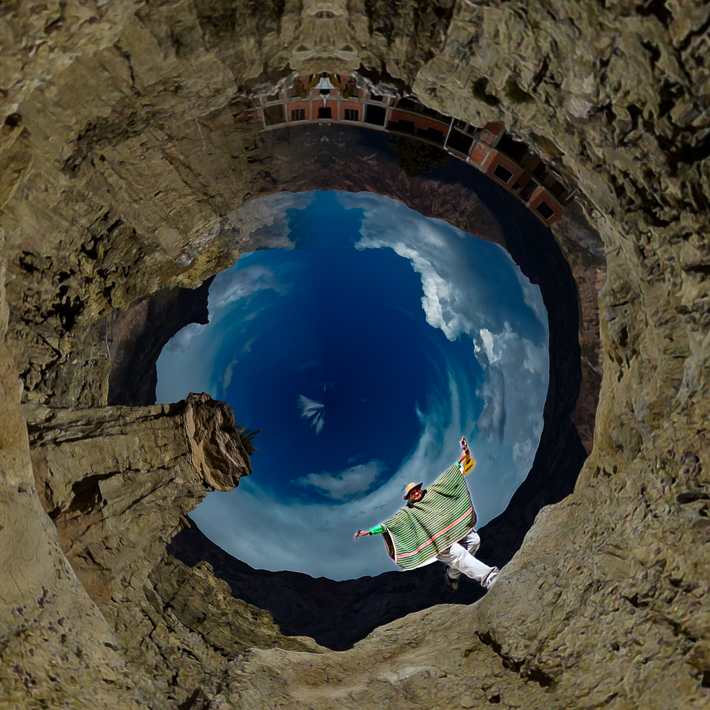
We have thought about going to Bolivia for many years. We kept putting it off due the extreme altitude of the region, ranging from a low 12,000 feet to as much as 18,000 feet in places. We were concerned that Burt’s health issues might present problems at such high altitudes. The doctors in our new Honolulu region were fantastic though. They discovered a blocked heart valve and then performed surgery to fix it in May 2022. With the new vigor resulting from that surgery, we decided to try… and we are glad to report that there were no serious altitude-related problems during this entire trip!
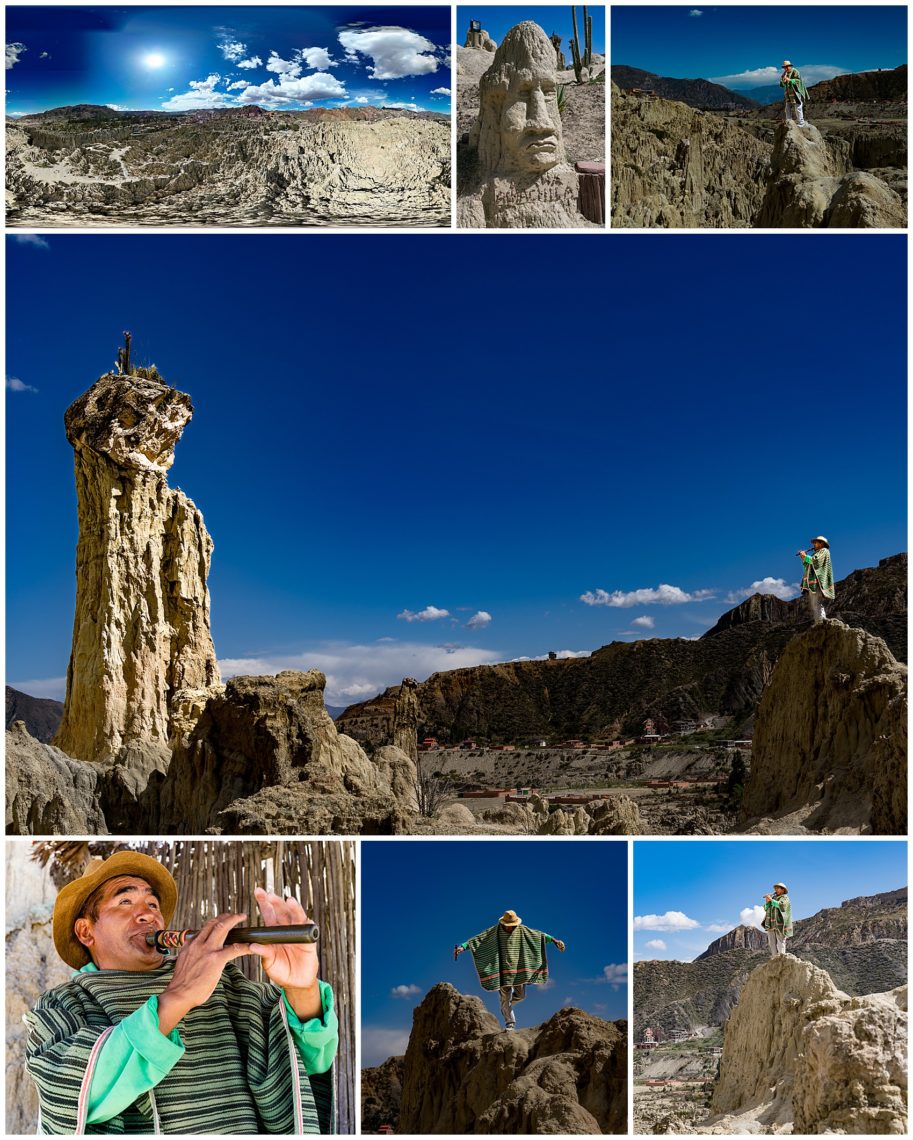
One of our first stops was to Moon Valley, so named because Neil Armstrong (first human to set foot on the moon) visited this site shortly after his moon landing and declared “This looks like a moonscape!” The locals loved it, and renamed the area to Moon Valley shortly thereafter.
While we were there, a man, Valerio, began playing a flute on a lonely outcropping of rock (center). We talked to him for awhile, discovered he was selling the flutes he made, and purchased one, as well as a charango he played for us. We also used the drone to photograph him on his rocky perch.
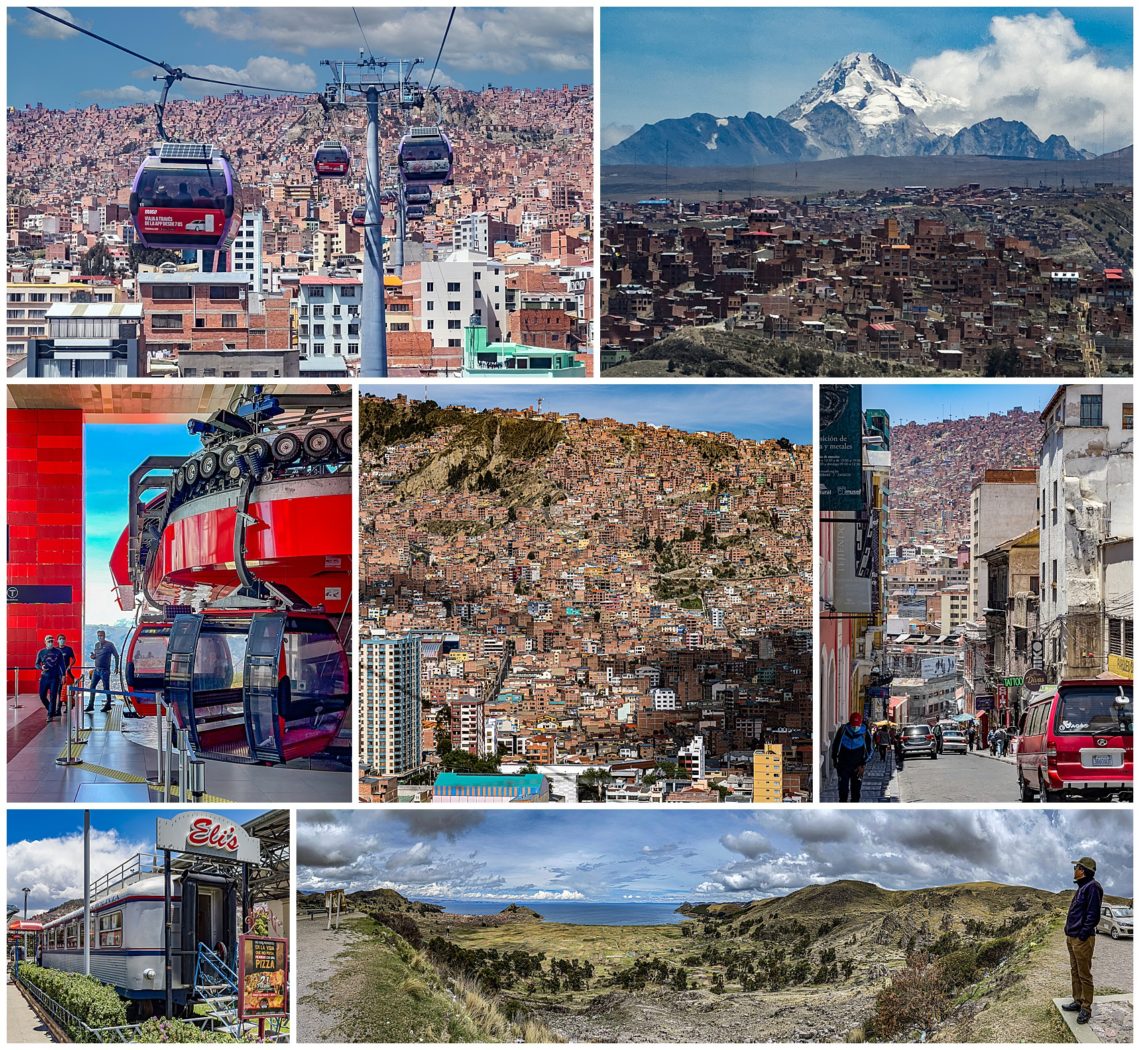
We spent a couple days in La Paz, to acclimate to the altitude before venturing to the Uyuni Salt Flats. La Paz is at roughly 12,000 feet, so it was a good resting ground from the 8,400 feet of our Cuenca home, where we had spent the prior month.
La Paz has an elaborate cable car system, very analogous to the subway system in New York City. You can get almost anywhere you want in the city and surrounding areas on the numerous routes and stops available (left-center). We soared above the city for several legs (top-left), giving us a grand vista of the city (center) and nearby mountains (top-right).
One thing that struck us whenever looking over the city was how tightly packed and crowded it is. The entire population of the La Paz metropolitan area (politically split into La Paz below and Alto above), is roughly 2 million, with the living space constrained by the surrounding hills (center and lower-right).
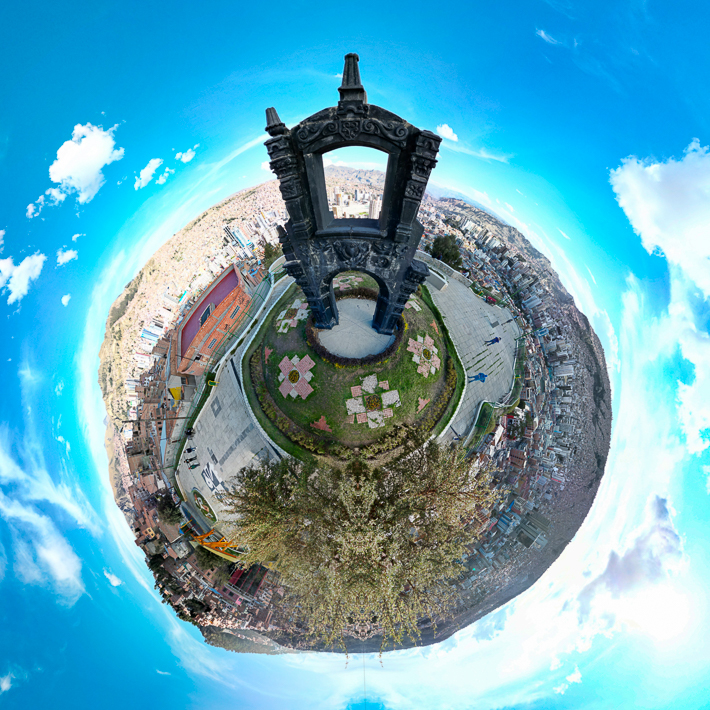
We took the opportunity to fly my new drone in several places in Bolivia. One was at a popular outlook over the city, where the panorama was shot in the prior photo block. We also used this opportunity to create another “little planet” 360 view of the monument at this lookout, as seen here.

In our week in Bolivia, we ate many meals, of course. One that stood out was a lunch at Manq’a, shown above. The food was all locally sourced, cooked by culinary students (center and upper-right), and plated in a way that almost made you want to just stare and not break the scene (lower-left and lower-middle). We were brought here by our La Paz guide, Franz (lower-right), who did a thoughtful job of showing us around, and being flexible enough to make changes based on our interests.

We rarely visit museums on our travels, generally preferring to see how life is, rather than how it was. However, the Musero Nacional de Etnografía y Folklore museum was a treat, and we are glad we made this stop. It was dedicated to the indigenous peoples of Bolivia, showing wonderful carvings of how they lived (top row), and then diving into how birds fit into their culture. Everything past the entry statures was related to birds, and how their feathers were used (bottom row). One interesting artifact was a bow and arrow they use. As seen in the center image, it has a very broad tip, rather than the typical point. This arrow is meant to stun the bird, so that a few feathers can be removed, and the bird released back into the wild.

Wherever we go, we almost always find something that surprises us. La Paz has the Witch’s Market, which was unique to our experience. The most common oddity on this street of vendors was the selling of llama fetuses, or the carcasses of still-born llamas (top-left and top-center). Llamas live in a very extreme environment here, with very high altitude and wide varying temperatures for the high desert. It is common for a pregnant llama to expel a fetus not suitable for birth, or for a baby llama to be birthed at night, when the temperature is too cold to survive.
When farmers find these, they sell them to “witches” (aka pharmacists) at this market. People buy these to use in their offerings to Pacha Mama (Mother Earth), believing they are an indication of Mother Earth giving and taking life in a continuous cycle.
There are also other items for sale to aid such offerings, such as the frogs (upper-right). While the local vendors do not like being called witches, they also take advantage of the nomenclature, and sell witch dolls (bottom-center) with a sense of irony. The air above the street is festooned with colorful umbrellas and tiny witches flying on brooms (center).
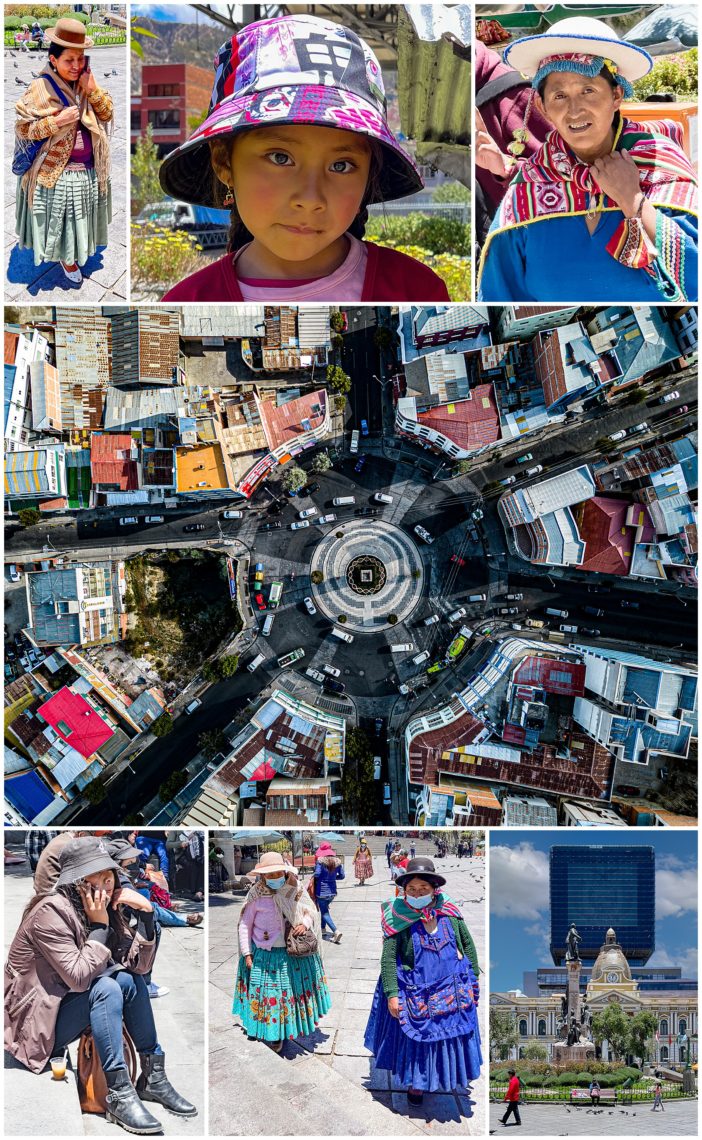
The local politicians decided to build a huge modern block structure in the middle of town for their government offices (lower-right), regardless of how out-of-place it looks among the other architecture, or how the locals felt about it… As was the case in many places in Bolivia, the drone was out flying, and caught this scene of a local round-about (center).
We always like to watch and photograph the local people though, and we have a collection of images reflecting that.
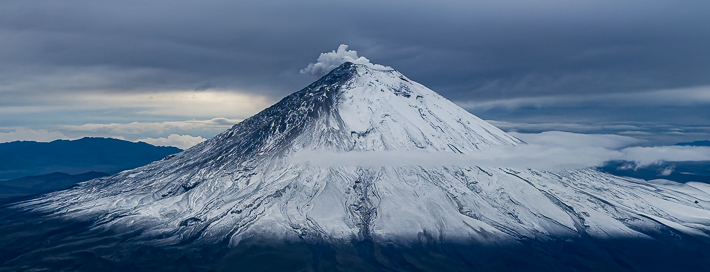
To get to Bolivia, we had to fly from Cuenca to Quito to Lima to La Paz. As we were leaving Quito, Mt Cotacachi was just outside our window and we caught the image above. This mountain is usually shrouded in clouds, so we were lucky to catch such a clear view — complete with smoke coming from the caldera. We read that evening that the volcano had actually erupted a couple hours after this was taken, so we almost got The Shot we have wanted for decades…
